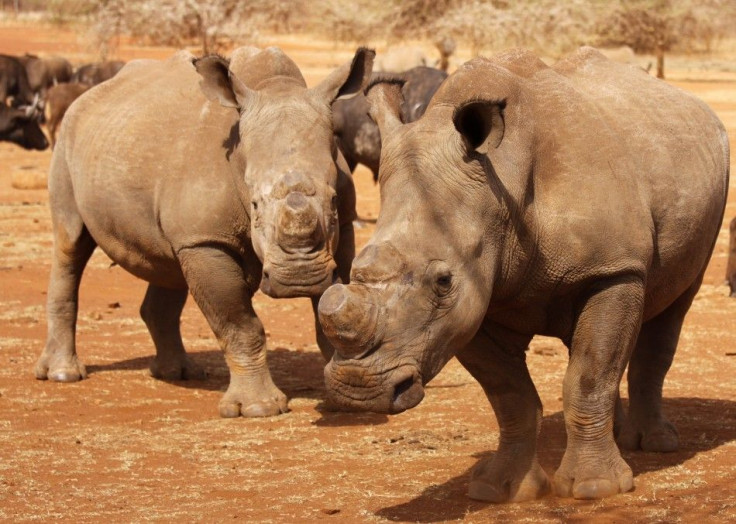The Poachers' Push: Are South African Rhinos On The Path To Extinction?

It is only October, and already South Africa has set a yearly record for poached rhinoceroses. The total killed so far is 455, despite government efforts to clamp down on this worsening scourge. If killing rates stay steady, up to 600 rhinos could be wiped out by the end of this year.
What’s most alarming is not the new record high death count, but the rate of escalation. South Africa is approaching a mathematical brink that could eventually spell the end of a species.
"There was always a realization that there has been an increase and that the rate of poaching has been increased year on year," said Kirsty Brebner of Endangered Wildlife Trust to Agence France-Presse.
“We're sitting at 455 with the two worst months to go,” she added. “And if you consider the growth rate [of the rhino population] is 6 percent a year, we're getting close to tipping point. That means when your deaths exceed your births, so the species starts to go into decline.”
There are currently just under 20,000 rhinoceroses in South Africa, of two different species: black rhinos and white rhinos.
Though not actually distinguishable by color, these two types face very different prospects. Black rhinos are smaller and tend to move independently rather than in herds. They are therefore easier to poach -- only about 1,600 are left in South Africa. The rest are white rhinos, which are also facing slower growth rates but are not critically endangered.
Efforts to combat the problem are in full swing, with communities and local organizations pitching in to raise funds and awareness. South African officials have arrested 179 poachers this year.
Unfortunately, the forces driving this epidemic are much bigger than South Africa.
Now that China has established a stronger trade relationship with Africa, a new demand for rhino horns has cropped up in Asia. A kilogram of rhino horn shavings can fetch about US$8,000 today, according to the South African newspaper Mail &Guardian. In 2006, it was worth less than $1,000.
Tragically, this is a case of simple misinformation. Rhino horns, which are similar in composition to human fingernails, are purported to have otherworldly medicinal properties in Asia. Some say it can cure headaches; others report it can cure cancer; still others think it prevents hangovers.
Scientific studies have proven these theories false, but old habits die hard. It’s not just affecting South Africa -- over the last half century, 96 percent of Africa's entire rhino population has been wiped out.
But conservationists in South Africa and across the continent are determined to intervene before the trend of rhino decline becomes irreversible.
With market forces turning the poaching game into an increasingly sophisticated, cross-continental criminal racket, it’ll be an uphill battle.
“I think that the rate at which it is increasing has come as a major shock,” said Brebner.
© Copyright IBTimes 2024. All rights reserved.












